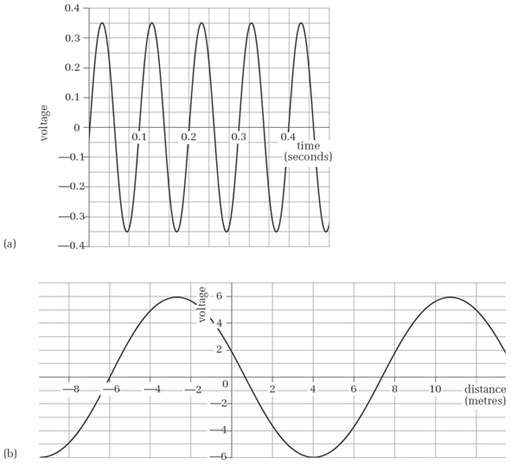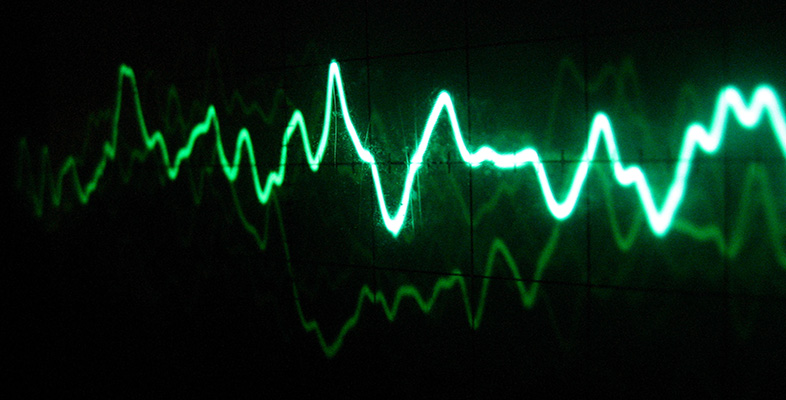6.2 Practical units of amplitude
The amplitude of a sine wave is measured in whatever units are used to calibrate the vertical axis, as you saw in connection with Figures 18 and 19. Nearly all the graphs you have seen so far in this unit have had pressure plotted up this axis. You may know that the unit of pressure is the pascal (symbol Pa), but this is a large unit. A more appropriate unit in relation to sound pressure variations is the micropascal (symbol μPa), which is a millionth of a pascal. Another unit often used in connection with sound is the decibel. This is a very different kind of unit from the pascal, and merits a section to itself. I shall return to it at the end of the unit.
Because in music technology we are often dealing with electrical representations of sound, the volt is another common unit for amplitude. As electrical signals can be quite small, the millivolt (symbol mV), which is a thousandth of a volt, and the microvolt (μV), which is a millionth of a volt, are often used.
Activity 21 (Self-Assessment)
What are the amplitudes of the sine waves in Figure 21?

Answer
(a) The amplitude is 0.35 volt. The tops of the peaks fall halfway between 0.3 and 0.4 volt, hence the value of 0.35 volt.
(b) The amplitude is 6 volts.
